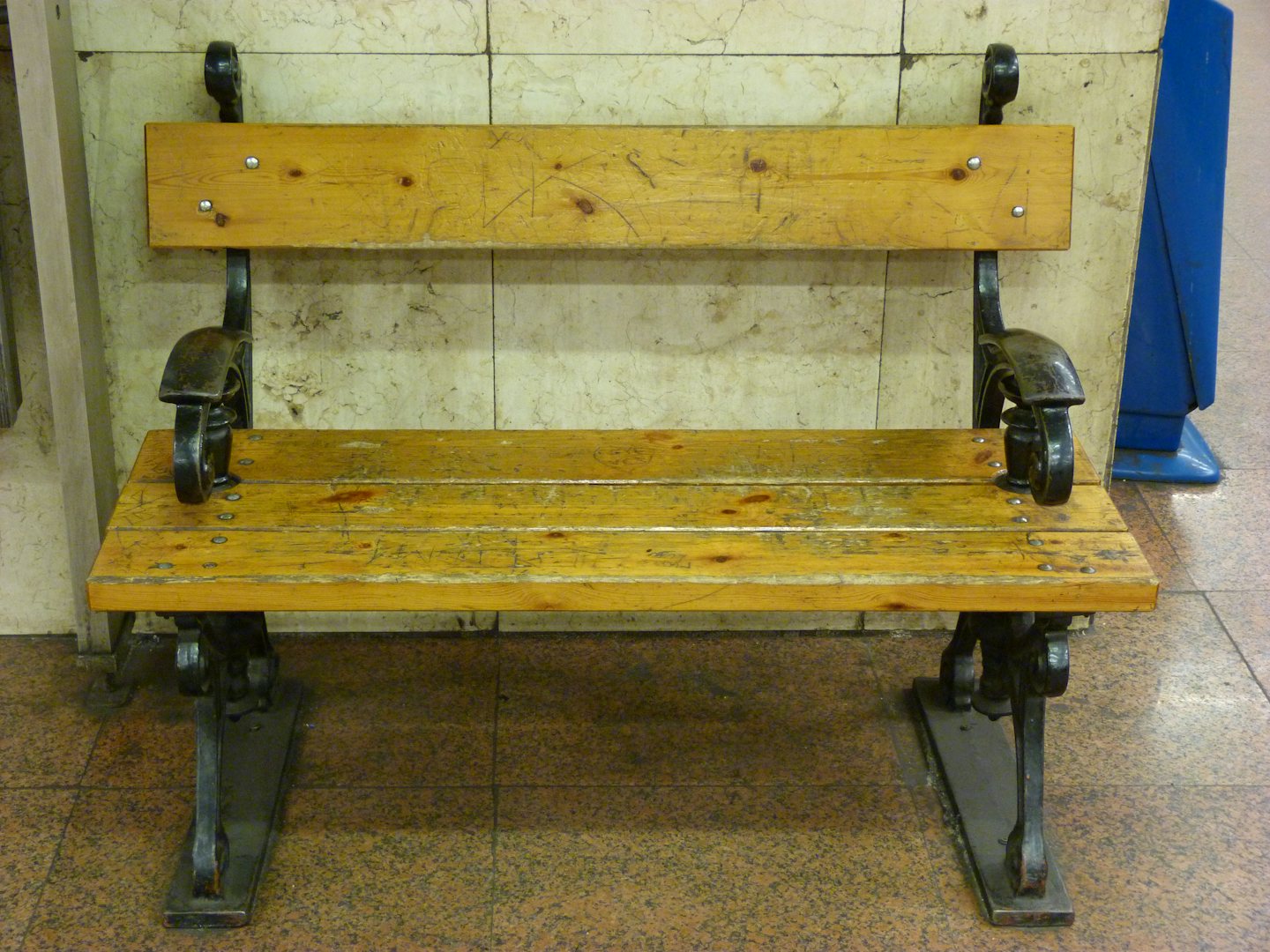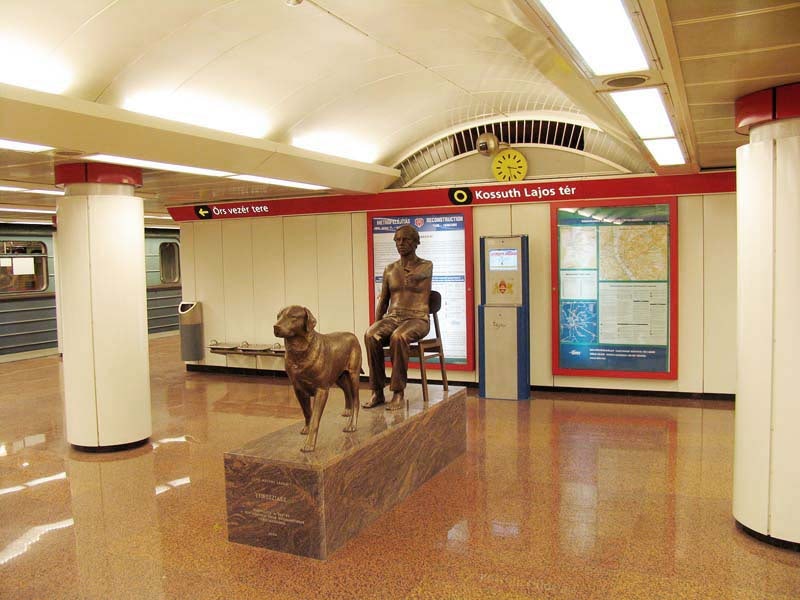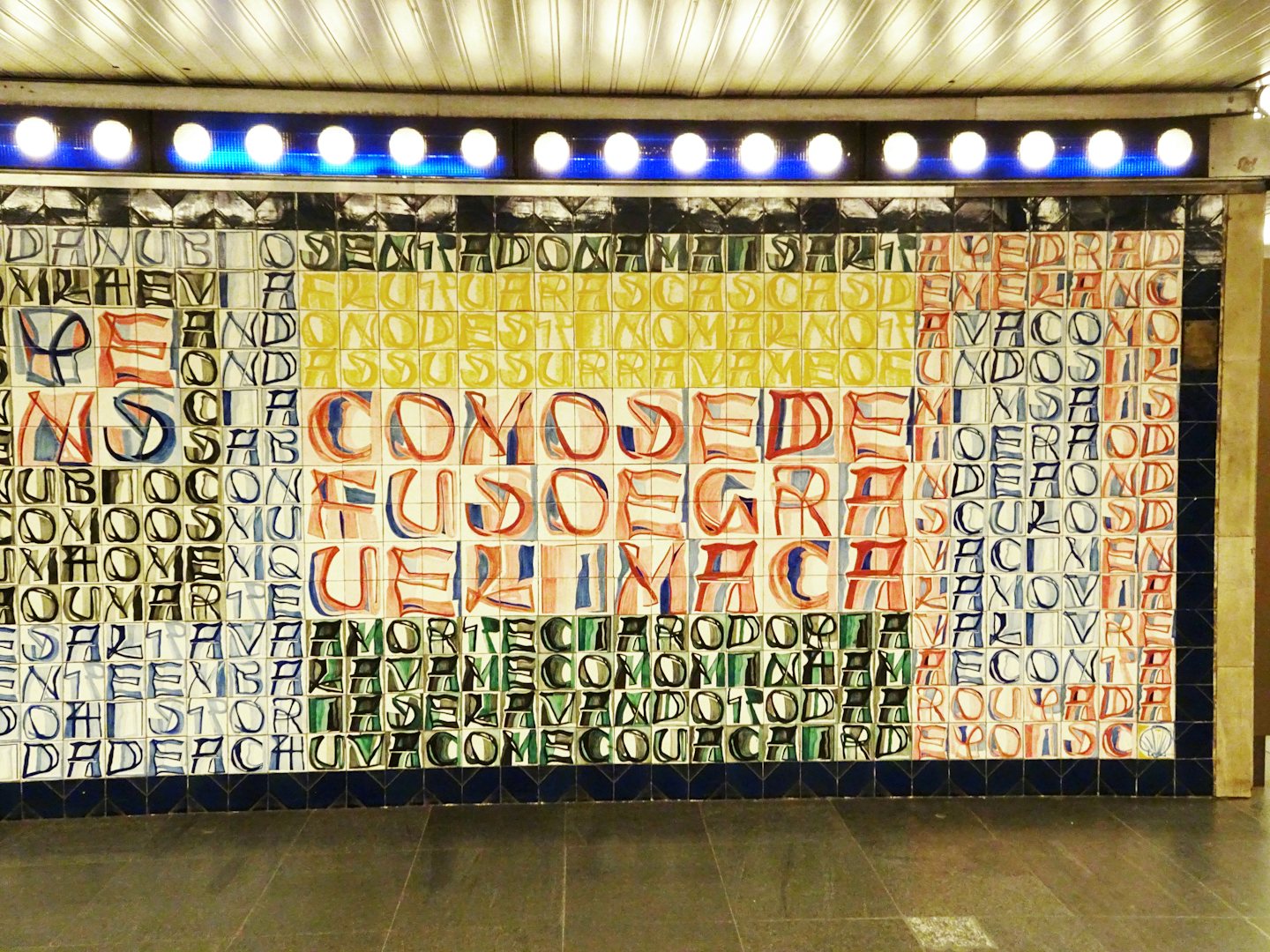5 underground secrets in Budapest
1) 'Birth of the City' Statue
In the early 1980s the city of Budapest commissioned a statue, to be titled Birth of the City. It was this design by Gyula Illés that was chosen. When you take a closer look, you’ll see that it depicts a giant female sex organ. Everybody expected prudish communist censors to intervene, but they didn’t, and unveiled the mural in 1983.
2) Kányádi Bench
The poem Vanity by the Transylvanian poet Sándor Kányádi is a playful homage to a bench in the metro station that was named after 19th-century poet János Arany: ‘I dare not wish more, just a bench at the metro station Arany János Budapest.’ His wish came true in 2003.

More hidden secrets of Budapest?
This guide helps you discover the best that Budapest has to offer. Hundreds of places to go, things to do, spots worth seeing, and interesting facts, hand-picked by a local author.
3) Theiresias Statue
When this statue was unveiled, the sitting man still had a stick, but it didn’t take long before that stick was stolen. It was replaced once, but not a second time. The title, carved in the dark granite surface, says Tiresias, the name of the blind fortuneteller in the Iliad. An artwork hardly fit for a public space.

4) Portuguese Wall Tiles
Few Budapestians know the story behind these colourful tiles: they form a work of art by João Vieira. The complicated piece shows Portuguese poems in Hungarian and vice versa. If you’re told this, you can make up some names if you stare at it intensively, but not much more. The work of art was an official gift to Budapest from its sister city Lisbon in 1996.

5) 'Mother and Child' Statue
There was no specific reason to erect this statue in 1972, shortly after the inauguration of this metro station, other than that it was trendy in a modernist way. The maker, József Somogyi, was the dean of the art academy and a member of the communist ‘parliament’; so not really a man in need of more commissions. The statue seems to have become more interesting some decades later.
Join the community
Sign up for free to gain unlimited access to the website. Plus, you'll receive a 10% discount in our online bookshop.
Already a member? Log in. |
New here? Sign up. |